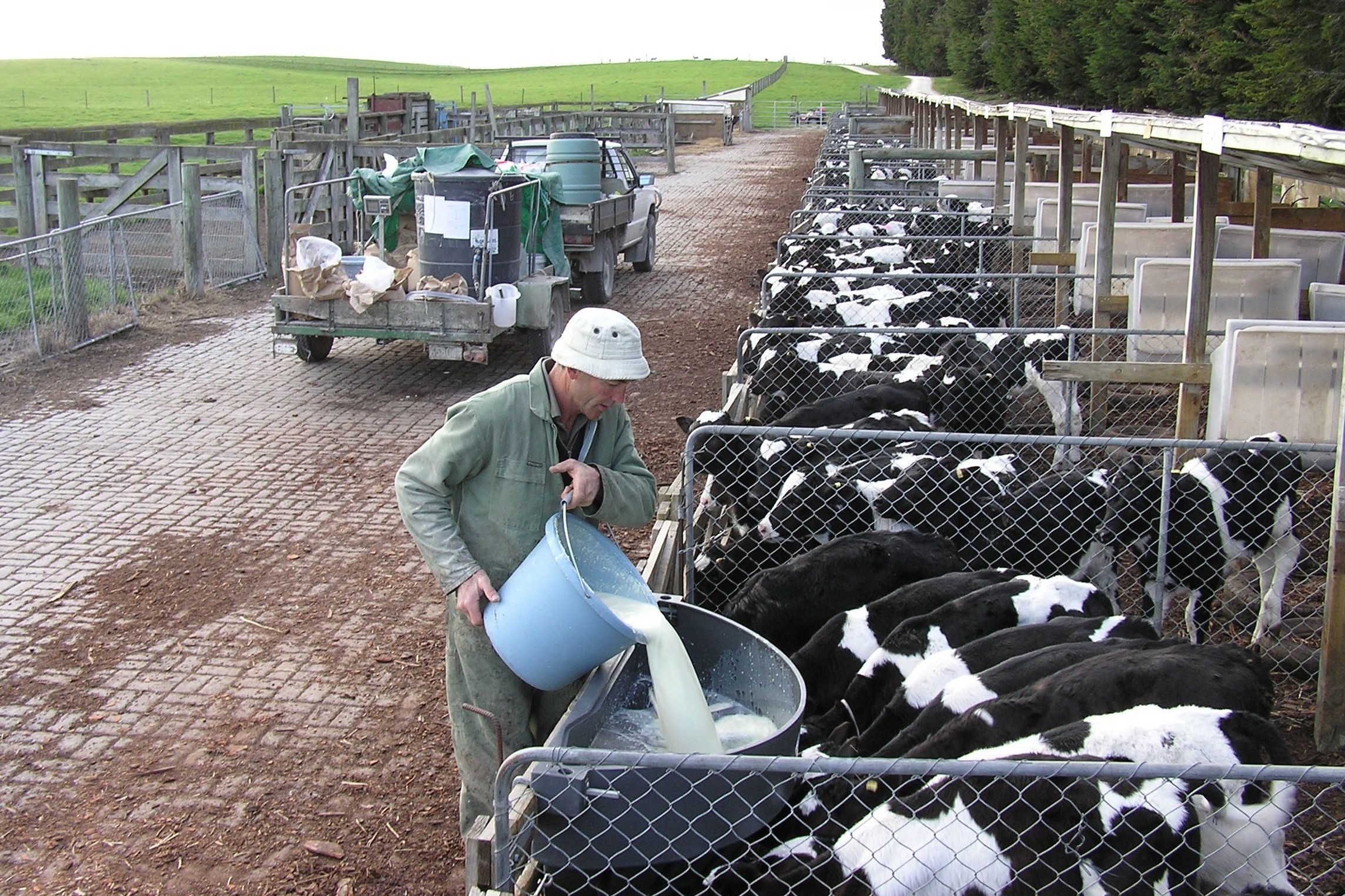Feeding calves
On-Farm Research at the Poukawa Research Farm did much pioneering research on calf rearing from the mid 1990s, rearing about 8000 calves across a wide range of trials. Paul Muir offers his thoughts on what is still relevant to current calf rearers

CMR fed to young calves should be based on skim or whole milk powder and it needs to curd. Young calves can be fed on non-curding milk powders but this comes with an increased disease risk (e.g. salmonella).
What complicates the issue in New Zealand is that there is no stringent labelling requirement for milk powders. If a milk powder curds you can be sure it is of reasonable quality and likely has 50-60% skim milk powder.
To curd test, make up 500ml of milk replacer and keep at 39C and add 5ml rennet. Do the same with blue top milk though it is very unlikely any milk powder will curd as well as whole milk.
If it was up to me, I would have mandatory labelling on all milk powders (% skim milk powder, % fat filled whey etc) so rearers can make a value judgement about what they were purchasing. A long list of “ingredients selected from the following” just doesn’t cut it.
Compartment milk feeders are really useful as they allow the identification of slow feeders and problem calves early stage and they can be grouped together. This can speed up milk feeding.
There are many different successful calf feeding systems but if you feed more milk it is harder to wean calves early. Feeding more than 500g CMR/day reduces solid feed intake and slows rumen development. With good management, restricted milk feeding combined with good meal intakes, means calves can be weaned from five weeks of age.
Once-a-day feeding with concentrated milk powder is a labour-saving mechanism. It is not necessarily part of a restricted milk feeding system.
There is no evidence that prebiotics or microbial additives have benefits unless used in association with other treatments when calves are scouring.
Calves need a highly digestible grain-based diet to speed up the development of their rumen. Whilst it makes easier feeding-out, there is no evidence that compressing meal into a pellet is of any benefit to the calves. A roller milled (loose mix) calf ration is cheaper and enables you to see what is in the feed. Pelleting can easily hide fillers and lower cost ingredients.
When we first started calf rearing in the mid 1990s, calf pellets were mostly very light coloured, reflecting a high proportion of barley, maize grain or soya meal. Meal/pellets also need to be highly palatable and there was a period between 2006 and 2008 when palm kernel (a low-cost protein source) was being added to calf pellets by some manufacturers. The lack of palatability led to calves only eating half of what they should have. As with milk powders we should have labelling on pellets and meal so rearers can make a value judgement on the product they are buying.
Calf meal fed pre-weaning should be 18% protein though to be fair it is the quality of the protein and the amino acid profile that is important. We don’t actually measure protein in feeds – it is the nitrogen content that is measured. This, however, tells us nothing about the digestibility of the protein and the amino acid content.
Calves need to be offered high quality meal from day 1. If calves have a high-quality meal on offer, they need little or no fibre. We have run several trials to prove this. Fibre is required after six-eight weeks but they get this from pasture. Definitely avoid “good” hay as they eat more of it and this reduces meal intake and slows rumen development.
Early rumen development systems are best served by keeping calves off pasture. It is tempting to put calves outside on pasture early because of shed space and disease concerns. But young calves at pasture will be reluctant to eat meal so rumen development is slowed and milk has to be fed for longer. Sheds do not need to be elaborate and calves just need to be dry and off grass.
The easiest way to save costs is to weigh calves when they come in and again at weaning. It is better to wean on weight gain than on actual weight. Rearers who use scales wean off milk a week earlier than those who use the eye-o-meter.
For those wanting more information on calf feeding see the below link to the Fact Sheets on calf feeding on the On-Farm Research website. https://on-farmresearch.co.nz/calfrearing/feeding/




